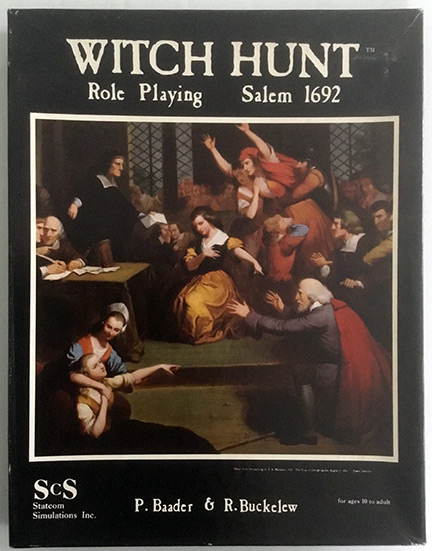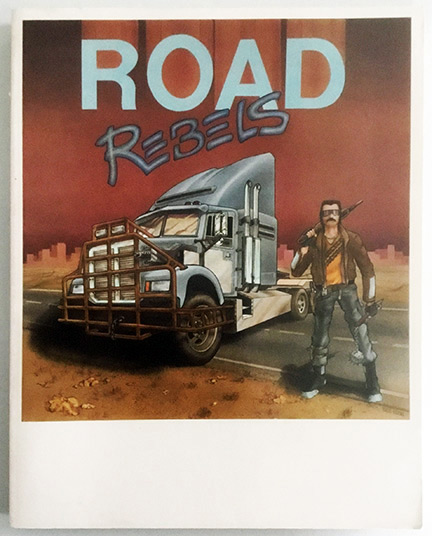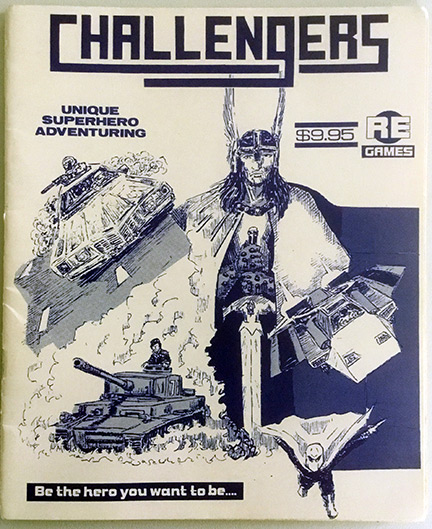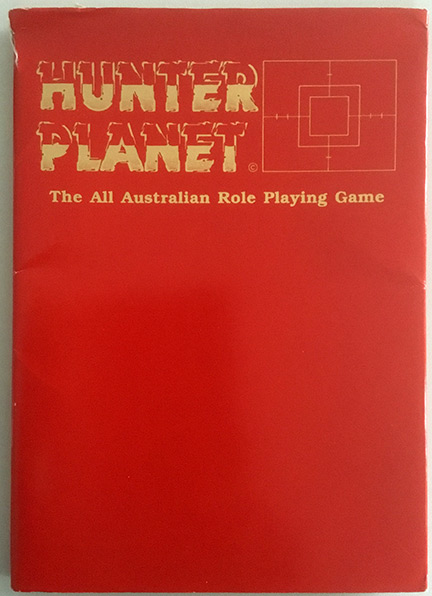This is part 10 in a series discussing forgotten RPGs (also see Part 1, Part 2, Part 3, Part 4, Part 5, Part 6, Part 7, Part 8, and Part 9). That is, games most people have never heard of or that didn't last long on store shelves for one reason or another. This is another eleclectic mix. Most of these games are relatively new acquisitions, typically ebay finds to add to my collection.


1. Witch Hunt (by P. Baader and R. Buckelew; published by Stratcom Simulations Inc. in 1983)

This is an interesting game. It is designed to do one thing. Either locate and punish witches in Puritan America or escape such a gruesome death. While it is possible to go beyond those parameters, I don't see any long-term campaigns coming out of it. This is a boxed set. For the time, it is very well done. Character creation starts with physical characteristics, which are essentially age, height, weight, marital status, social status, and occupation. Then we move onto physical and mental attributes (rated 1-100): strength, constitution, speed, agility/dexterity, comeliness, wit, knowledge, intuition/premonition, wisdom, and will. As characters advance in level for their chosen aligment (magistrate or witch), certain attributes get bonuses. Some attribute tests (like strength) are performed as a D% roll under the difference between both character's rating (active character's rating - resisting character's rating = odds). Other tests use an attribute rating as the base chance, modifying it for various situations. The way a test is handled for each attribute is described, with combat working in a similar manner. One element that is generally missing from other games of this publishing era is that inanimate objects are given strength ratings to determine the odds of shattering/penetrating them. Nice touch. Weapon damage depends on the strength of the person using it (this is a wide table). The basic rules complete on page 14. The rest of the book details magistrates' duties and procedures (searching, interrogating, arresting, etc.), trials, magic (curses, familiars, etc.), and a basic GM (town crier) section. Historical notes, maps, and a sample scenario are included. I hadn't heard of this game until a few years ago. I would have picked this up back in the day if I ever saw it. It's the sort of game that sounds really cool at the store, but has limited play value. Nevertheless, I'm glad I own a copy.




2. The Mechanoid Invasion (by Kevin Siemieda; published by Palladium Books in 1981)

This small book printed on what looks like newsprint is another interesting game. It seems to be the first published use of Palladium's RPG system in some form. We dive right into the rules without any explanation of the setting. It discusses the GM, hit points, armor rating, and a few other details before hitting up character attributes. There are eight of these, rated as 3d6 (17-18 gets a special bonus): IQ, mental endurance, mental affinity, physical strength, physical prowess, physical endurance, phsyical beauty, and speed. Next up are seven Occupational Character Classes (OCC), from pilot and engineer to commando and esper, with a few optional ones. OCCs are very much like D&D classes, with special bonuses per level to skills and weapon proficiencies. I'm stopping right here to discuss the art. It is great. It's a more serious tone than that in D&D of the time with a nice level of detail for line art. The newsprint and art combine to give it a feeling of an old mail order catalog or advert page in a comic book. Anyway, combat is easy. Roll over a target's armor class (hopefully using class bonuses). Rules for combat are minimal, but the equipment describes some special rules. A number of vehicles are included, as are creatures/enemies. Psionic-weilding characters and creatures add that extra level of fun. A brief discussion of the setting ends the book. The cover price of $3.75 would have made this an unbelievable buy back in the day. My first introduction to Palladium Books was their Robotech RPG, but I find this to be a better game for sheer size. One gripe is that the text is very small. There are two other volumes in this series. You can get the trilogy of this series here in PDF format.




3. Road Rebels (by Dale L. Gordon; self-published in 1989)

I've got a love-hate thing going on with this game. On one hand, I love the concept. You outfit your vehicles and duke it out Mad Max style in a post-apocalyptic world. The vehicle upgrades are good, but the rules kill me and there is almost a total lack of art (which is not a big deal in itself). After the basic premise is discussed, hostility on the road is the first table, followed by info on movement, combat, and using and borrowing money. The organization seems a bit off, as we move onto rolling up characters. There are seven characteristics, rated from 3 to 18 (roll 4d6, drop the lowest die): strength, dexterity, looks, constitution, size, charisma, and speed. Social classes (like peasants and road rebels) come into play in much the way classes would. There's lots of fiddly bits that really turn me off. There are three values for elements like climb rate or strike rank bonus, using the appropriate one for the character's condition level (level 2 is the default). Weapons have a quarter-page specifications sheet -- it's a bit overwhelming. Skills are discussed as being a d% roll, but you get bonuses depending on particular characteristic ratings. One element I find interesting is that weapons use a cutting class (A to J), which is used on a table to determine armor penetration. Page 49 introduces equipment, while page 77 rolls out the vehicles. Each one gets a two-page sheet of form information. The layout is so simple that it makes digesting it very tough. This goes on until page 117, where vehicle-related rules are discussed. We get creatures starting on page 157. At least, these are easy to read, except that the damage values for their weapons take up a lot of room. A very short sample scenario and reference sheets finish the book. I'm worn out. I see where they were going with the rules, but between the presentation and amount of things to track, it's not my cup of tea. Other than some weapons and creatures, there's also not much to mine here for other games.




4. Mars (by David Tennes; published by FASA in 1981)

This book is a little different from the others in that while it does consist of a rules system, it is more like a sourcebook for other RPGs or generic system for your own miniatures/roleplaying settings. It's primarily about combat, but it does allow for knowledge-based rolls. Every rule is numbered, making it both easy to reference and hard to read at the same time. There are five characteristics rated as a percentage: strength, dexerity, agility, endurance, and intelligence. Combat factors are used to determine base odds for a given attack, typically being averages of certain characteristics; these are: unararmed, armed, and projectile (there are two of these for different levels of stress). Each character also has a damage points rating to track injuries. Certain bonuses are also possible, such as for martial artists and non-human species. A number of animals are listed with damage points, natural weapons, and the damage they do. The rest of the book details movement, sighting, surveillance, communication, hit modifiers, and all other aspects of combat. It is what it claims to be, nothing more and nothing less: a solid system for handling combat that can be used with your own settings, another RPG, or with miniatures. For example, don't like your existing miniatures rules, use this book instead.




5. Challengers (by David F. Nalle; published by Ragnarok Enterprises in 1985)

Another book with very small, computer-type text, which makes it hard to read. I can't really fault it for the time, though. This is a superhero game. Does it work well as one? Let's find out. There are twelve characteristics divided into physical, active, mental, and social categories, and rated from 1 to 20: size, constitution, strength, reaction, dexterity, agility, psychic ability, rationality, education, appearance, charisma, and social status. That's a lot. As long as there are no skills, I'd be OK with it. Secondary characteristics are calculated: hand attack, missile attack, hand defense, missile defense, attack force, activity points, hit points, fatigue points, training points, movement, and initial wealth. Makes it easier to handle rolls if they are all calculated beforehand. Makes sense. Uh oh. Skills and training mean more numbers. Doesn't seem too bad though. Training points buy skill ratings. Skill rolls are handled with a D%, using a chart that I have to look for several pages later. It baffles me. The odds depend on the characteristic rating and skill rating, but without an example at this point, I am very confused. I also stumbled on the skill list. There's a lot, and each has a different cost in training points per level. Combat is up next, which doesn't seem too difficult. Roll D%, adding appropriate attack rating and subtracting defense rating, and then consulting the appropriate attack chart. I only see one chart, but the column used depends on the desired hit location or area covered. I'm starting to feel like I'm on a merry-go-round and I want to get off. Let's see what else we've got here. I had to back up to find the powers. There's a fair number, each with its own special rules. I'm not sure how complete they are. Vehicles finish this book. The second book consists of background, adventures, and several characters, which could easily be mined for use with other superhero games. The cover claims "unique superhero adventuring," and they are certainly not wrong. It's not my thing, as the system is way too complicated, especially for a superhero game. The D% roll could have been handled in a much simpler way, and I am not fond of that many characteristics. I feel bad, but I guess the $1 price tag on it (for a $9.95 cover price) should have been an indication.




6. Hunter Planet (by David Bruggeman; published by HPAC (Australia) Pty. Ltd. in 1985/1987)

This is the second edition that came in a red folder, containing an adventure, blank sheets, and some other material. What is the game about, you ask? It's basically about going on an alien safari. You hunt dowm creatures on an alien planet. Quite a unique premise, as that is pretty much all the game is about. Sure, you can do other things with it, but I'm not sure what. After a history of the empire of man, the first piece of art confirms that this game does not take itself too seriously. It's about fun. More specifically, it's about the fun of going about and killing things on a hunt. Make of that what you will. Rule Number 1 is that if you don't like the rules, don't use them. Fair enough. The rest of the rules start with explaining character creation. There are seven characteristics rated from 1 to 10: strength, dexterity, charisma, intelligence, constitution, general knowledge, and luck (1-6). That's it, other than personal details and equipment. I like it so far. Nice and easy. The rules (still on the same page) then explain the effects of certain weapons, survival, and equipment. A sample chracter, X Bear (which looks like a teddy bear, even to scale), is provided. Then we get the GM's rules, which actually explain how to fight. There is a base 50% chance of hitting something, modified by however you want. At this point, I do not see any relevance to characteristic ratings. Luck can help a character by making a d10 roll under its rating, but the effect is up to the GM. I also found actual combat modifiers later in the book. There is a quick reference to making a roll against a characteristic for actions outside of the normal range, so I assume this is also d10 roll under, although it also states an arbitrary percentage roll can also be made. This leads me to believe that characteristics are not at all important. Maybe I'm missing something. I'm not going to touch on the adventure, but other than the possibility of it being useful in other games, I don't really see much here to recommend.




That's another list in this series done. If you're looking for more nostalgia, check out the Wee Warriors line of Dungeon Kits and boardgames from 1976-1978, available once again. And coming back into print soon is Worlds Beyond, a space action RPG from 1989


Part 11... |







